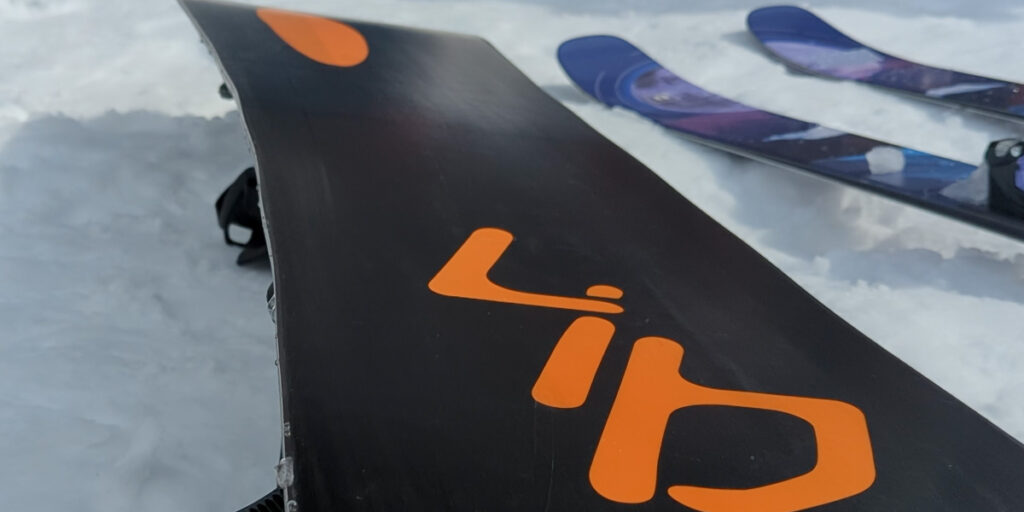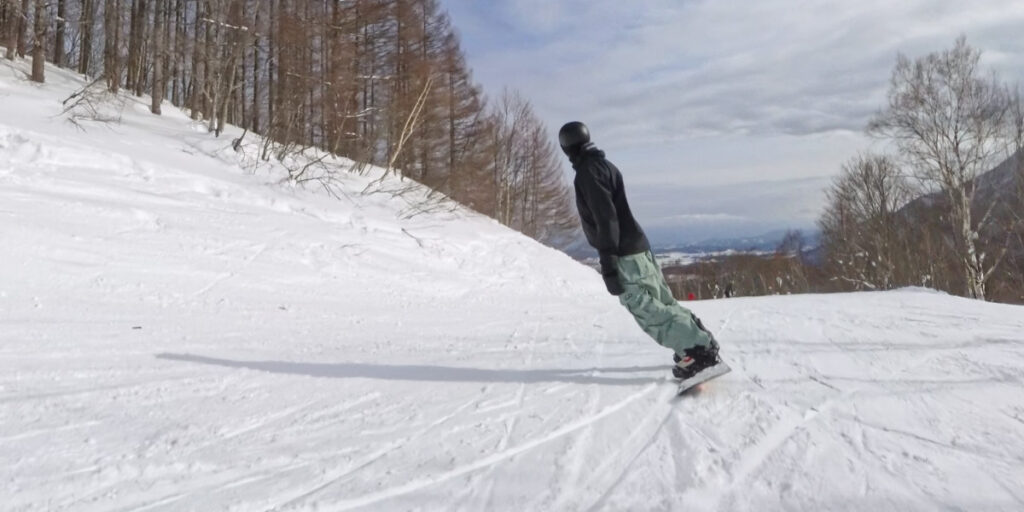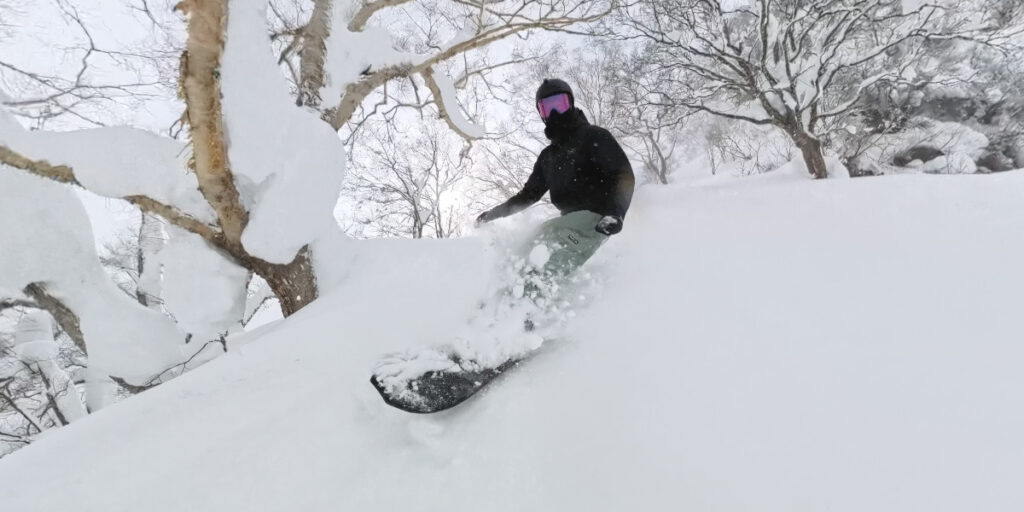The Lib Tech Apex Orca is a high end version of the popular Orca. It is a wider than normal powder board, that is made to be ridden shorter than your normal board.
The Apex version is lighter, snappier and has a whole bunch of carbon in it, along with a big price tag.
It has the same shape, profile and measurments of the Orca, but comes in just 3 sizes. It’s for people who have the money, and want the best version of something.

How the Apex Orca rides
My setup
Board: Lib Tech Apex Orca 156cm
Bindings: Nitro Team Pro (medium)
Boots: Vans Infuse 9.5
I ride a slightly narrower stance than what is normally recommended for most boards, but Lib Tech don’t mark those on their boards, but my stance width always ends up at around about 22 inches wide.
Binding angles are +12 on the front foot, and -9 on the back foot.

Testing conditions:
I was riding the Apex Orca at resorts close to Myoko, Japan. There was one day of sunny, warm conditions with slightly firmer groomers, but the rest was soft, light and deep powder.
The conditions were as good as possible for testing a board like this.

Profile
The hyrbid profile is a good option for a powder board. It naturally wants to help the board float, and keeps a loose enough feel for quick turns in soft snow. The slightly more aggressive camber section in the tail of the board does help you “hang on” when you are in the back seat, but other than that it has the standard hybrid feel.
Flex
The board sits somewhere in the medium to medium-stiff flex rating area, and for the riding I was doing it was perfect. It was stable enough that I could land tail heavy and it would save me, but never felt like a door that I couldn’t move around.
Turns & Edge Hold
In general, the board has quite a small sidecut at 7m. That isn’t uncommon for boards like this, where the tight sidecut helps to keep the board feeling responsive, by balancing out the wider width – that would normally make a board feel sluggish to turn.
I never got the feeling that it took too much effort to get the board on edge. I think that it would have been the tight sidecut, as well as the taper helping to speed up the feeling.
Speed
The speed of this board was always good for me. I waxed it before the trip, and not at all during. I didn’t notice a drop in speed at all. It was noticeably quick on the cat tracks, where it was more obvious that I had to weave around people if I didn’t want to slow down.
For a hybrid board, it did have quite a solid and stable feel. Nothing like a full camber board, but quite solid considering the profile.

Does it come in wide models?
The Lib Tech Apex Orca (or the regular version) don’t come in specific wide models. All of them are quite wide anyway, so even if you have big boots the board will be wide enough.
As a general rule, the waist width (which is the narrowest part of the board) on a wide board is 260mm or larger. All three sizes of the Apex Orca have a waist width of 267mm.

Overall
Overall, I really liked the Apex Orca. As a powder board, it is more than capable for everything that I wanted it to do.
It handles deep snow very well, and has a fun, floaty feel that is quick and easy to turn. Half the job of a powder board is getting to and from good terrain, so you still need it to do well in harder packed snow. The Apex Orca with the Magne-Traction has plenty of edge hold for icy traverses, and you can quickly get comfortable taking it into tougher entries.
Although I wouldn’t choose this board as a do everything board, I am sure that there are people out there who would happily ride this board no matter the conditions.

Who would this board suit?
The Lib Tech Apex Orca would suit riders who want a surfy powder board, that floats well in deep snow. The profile of the board makes it quite easy to ride, so as long as you are at least an intermediate rider, you will be able to get lots out of this board.
Do you need the extra features of the Apex Orca?
Probably not. Sure, you can save some weight with the Apex, and have the best version, but you can get by with the regular Orca if you need to.
Features of the Lib Tech Apex Orca
Orca C2x Directional
Lib Tech use the C2x profile in quite a few of their boards, but this is a slightly different variation. This version is directional, and has a more pronounced camber section in the tail, with a flatter extended version on the nose.
Directional
There is a 2.5″ setback, as well as 11mm of taper.
Medium to Medium Stiff Flex
The real life flex of a board changes quite a bit depending on the weight of the rider, so for my weight this board was on the stiffer end of the flex rating.
Magne-Traction
Serrated edges, or bumps on the sidecut help to add grip in icier conditions.
Core
30% Aspen, 25% Paulownia and 45% recycled PET bottles.
Glass
Carbon all over the place, a big carbon X and some magnesium techno fiber bands – whatever they are.
Sintered Knife Cut Base
A fast sintered base.
Where does this sit in the Lib Tech lineup?
Surprisingly, this isn’t the most expensive board in the Lib Tech range. The top board is the Cygnus BM, another couple of hundred dollars more.
Technical Specs of the Apex Orca
| Size (cm) | Waist Width (mm) | Contact Length (cm) | Taper (mm) | Weight Range (lbs) |
| 153 | 267 | 110 | 11 | 120+ |
| 156 | 267 | 113 | 11 | 130+ |
| 159 | 267 | 115 | 11 | 140+ |
Find the best price on the Lib Tech Apex Orca Review